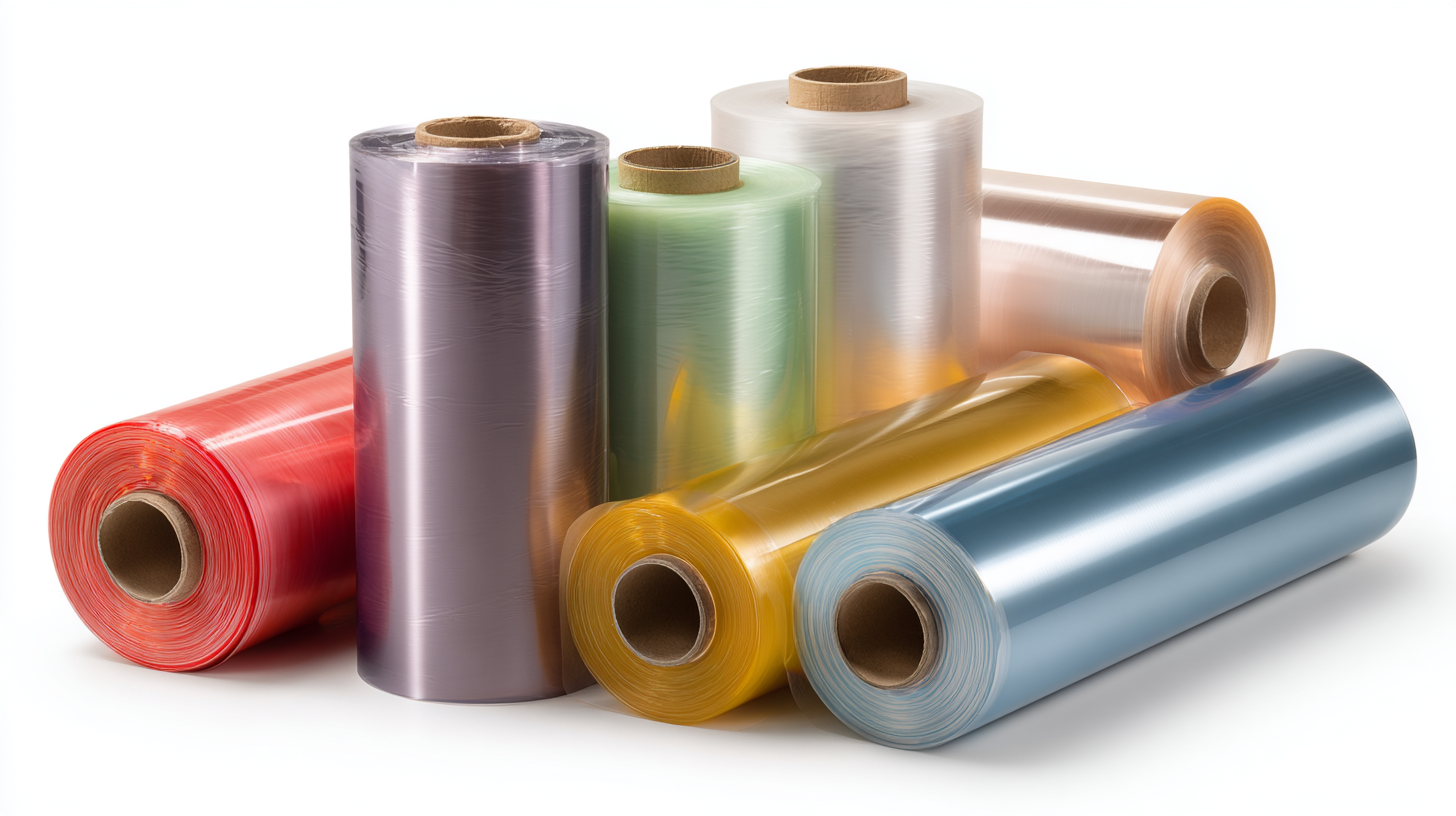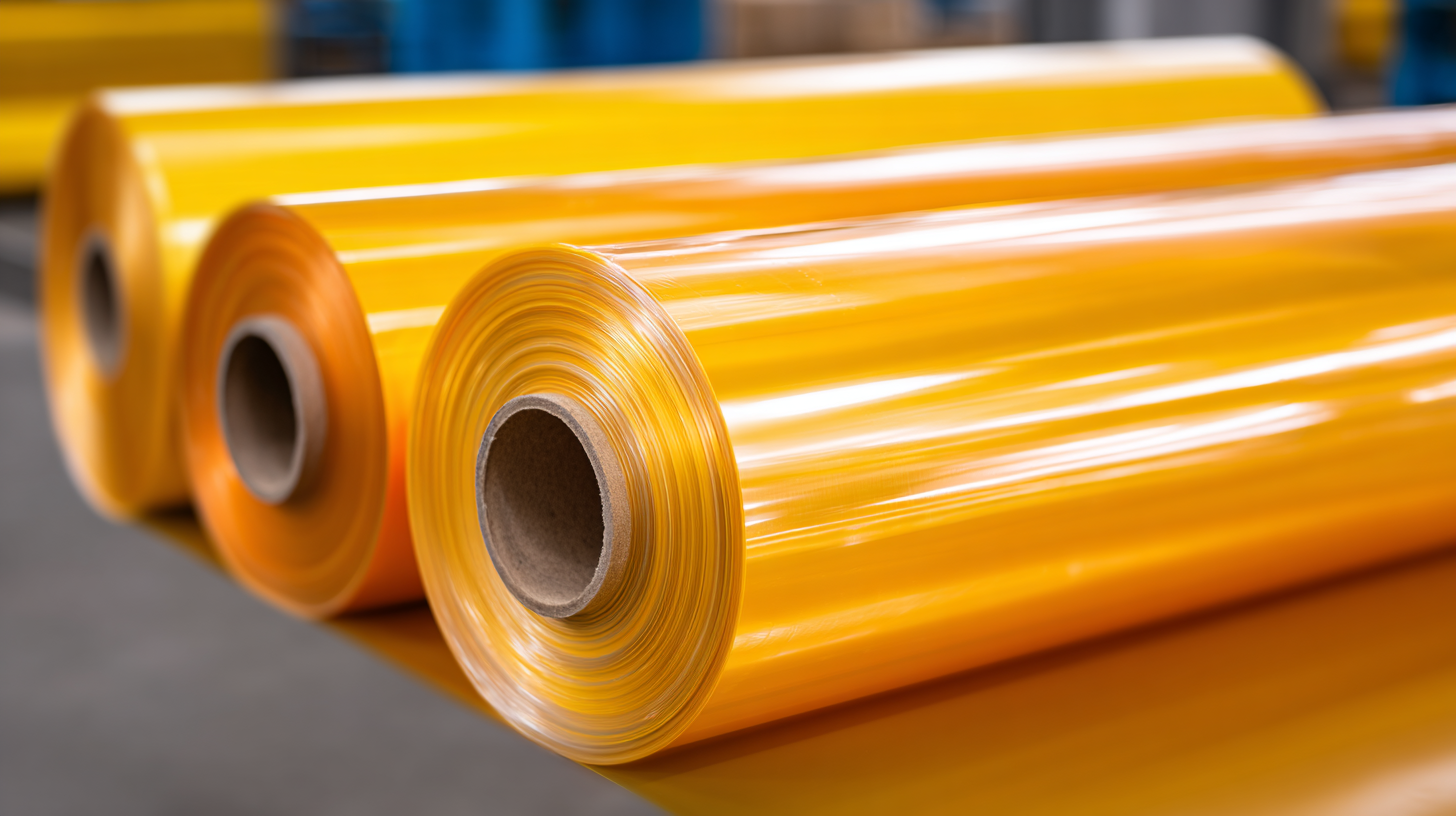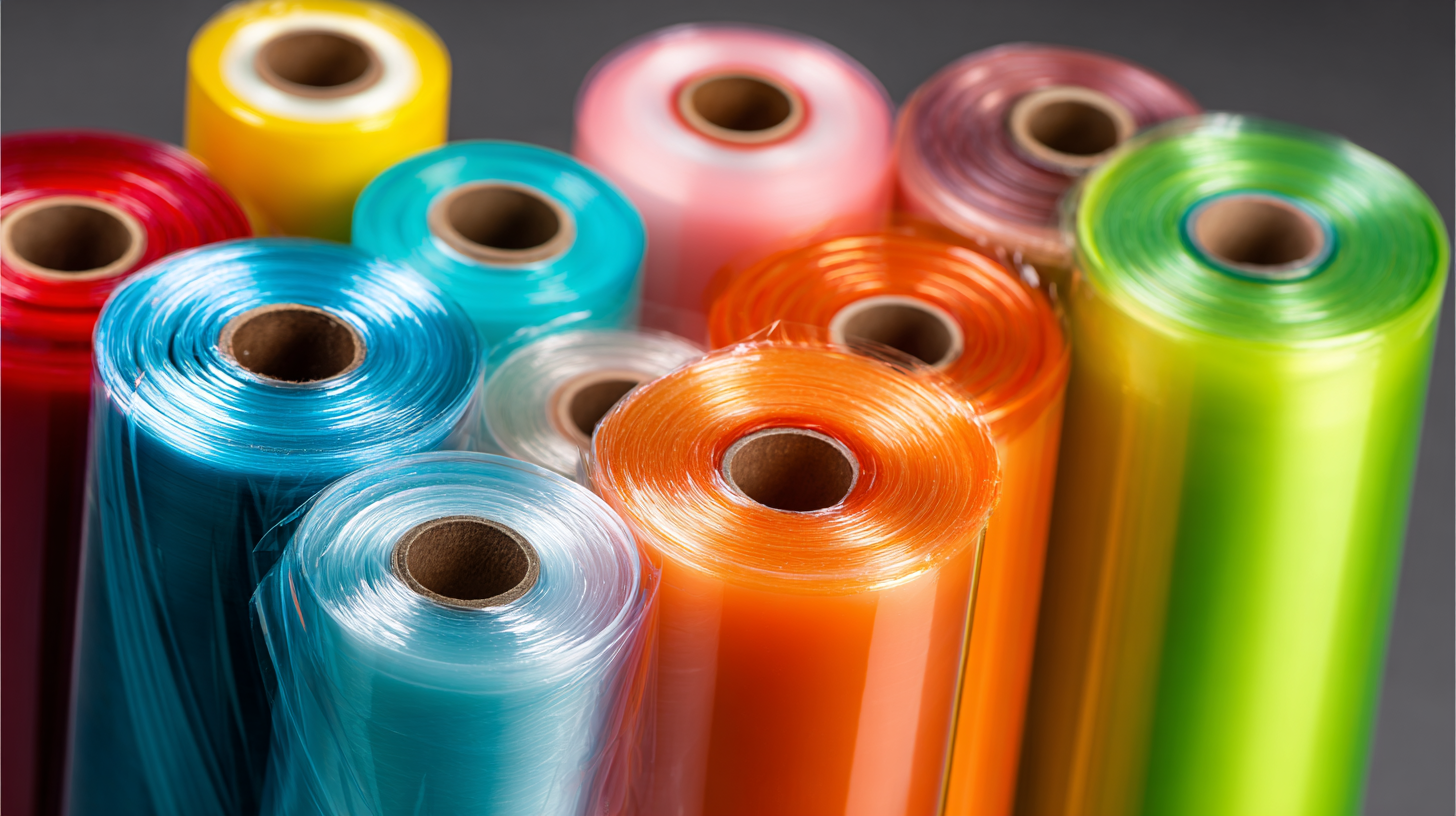2025 Food Packaging Trends: 5 Key Insights for Sourcing the Best Plastic Rolls
As we look ahead to 2025, the food packaging industry is poised for transformative changes, driven by sustainability demands and innovative materials. According to a recent market research report, the global food packaging market is expected to reach USD 500 billion by 2024, with the demand for efficient solutions like plastic rolls continuing to rise. Notably, plastic roll for food packaging has emerged as a favored choice among manufacturers due to its versatility and cost-effectiveness. The increased focus on reducing food waste and enhancing shelf life has propelled the development of advanced plastic materials that are not only durable but also eco-friendly. Sourcing the best plastic rolls is critical for food brands aiming to stay competitive in an evolving market landscape.

In this blog, we will explore five key insights and top strategies for navigating the 2025 food packaging trends, ensuring that stakeholders are well-equipped to meet consumer expectations while maintaining sustainability standards.
The Impact of Sustainable Practices on Food Packaging Demand by 2025
As the demand for sustainable practices continues to rise, the food packaging industry is poised for significant transformation by 2025. Innovators are increasingly focusing on eco-friendly materials and design strategies that reduce environmental impact, aligning with consumer preferences for greener alternatives. This shift is particularly evident in the burgeoning markets of flexible packaging and recycled materials, where brands are actively seeking sustainable plastic rolls to meet stringent packaging requirements.

The global market for fruits and vegetables processing is projected to reach $36.99 billion by 2024 and expand to $63.61 billion by 2033, indicating a compound annual growth rate (CAGR) of 6.2%. Simultaneously, the fast-moving consumer goods (FMCG) packaging sector is also on an upward trajectory, expected to grow from $71.99 billion in 2025 to an impressive $105.71 billion by 2032.
This growth is driven by a collective shift toward sustainable packaging practices which not only cater to regulatory demands but also resonate with environmentally-conscious consumers who prioritize sustainability in their purchasing decisions.
As we look towards 2025 and beyond, the influence of these sustainable practices will undoubtedly shape the food packaging landscape, fostering innovation and encouraging the adoption of materials that support long-term environmental goals. Companies that embrace this trend stand to benefit significantly, both in terms of market share and consumer loyalty, as they adapt to the evolving norms of sustainability.
Key Innovations in Biodegradable Plastic Rolls and Their Market Growth
The landscape of food packaging is evolving rapidly, with biodegradable plastic rolls emerging as a significant focus for manufacturers and businesses alike. As sustainability becomes a crucial priority for consumers and companies, innovative solutions in biodegradable materials are gaining traction. Recent advancements in bio-based polymers and compostable packaging materials not only reduce environmental impact but also meet the stringent requirements for food safety and preservation. This shift towards sustainable options reflects a growing acknowledgment of the need to minimize plastic waste.
Market growth for biodegradable plastic rolls is being driven by several factors, including increasing consumer awareness of environmental issues and stricter regulations on traditional plastic usage. Researchers and companies are exploring new technologies and materials that enhance the usability of biodegradable options while ensuring that they can perform effectively in various conditions. As research progresses, we can expect to see more tailored solutions that cater to specific food packaging requirements, leading to an overall boost in the market for these innovative products. Embracing these key innovations will not only help companies align with consumer expectations but also contribute to a greener future.
2025 Food Packaging Trends: Key Insights on Biodegradable Plastic Rolls
This chart illustrates the projected growth of the biodegradable plastic rolls market from 2019 to 2025, highlighting a significant increase as consumer demand for sustainable packaging solutions rises. The continuous trend towards eco-friendly products reflects an important shift in the food packaging industry.
Consumer Preferences Shaping Food Packaging: Insights from Recent Surveys
Understanding consumer preferences is crucial in the evolving landscape of food packaging, particularly as we approach 2025. Recent surveys highlight a significant shift towards sustainable and eco-friendly materials. Consumers are increasingly conscious of their environmental impact, prompting a growing demand for packaging that minimizes waste and utilizes recyclable resources. This preference not only influences purchasing decisions but also shapes the strategies employed by manufacturers and suppliers of plastic rolls.
Moreover, convenience remains a top priority for consumers. Packaging that enhances product freshness and extends shelf life is highly favored, reflecting a desire for quality and value. Innovations such as resealable packages and easy-to-open designs are gaining traction, as they cater to the busy lifestyles of modern consumers. As brands adapt to these insights, they must focus on creating packaging solutions that meet both sustainability goals and convenience needs, ensuring they remain competitive in a rapidly changing market.
Technological Advances in Food Packaging: Enhancing Shelf Life and Reducing Waste
 Technological advancements in food packaging are revolutionizing how we think about shelf life and waste reduction. With innovations like biodegradable plastics, smart packaging, and enhanced barrier properties, food manufacturers can now extend the freshness of products while minimizing environmental impact. This shift not only benefits consumers, who enjoy longer-lasting products, but also helps businesses reduce costs associated with spoilage and waste.
Technological advancements in food packaging are revolutionizing how we think about shelf life and waste reduction. With innovations like biodegradable plastics, smart packaging, and enhanced barrier properties, food manufacturers can now extend the freshness of products while minimizing environmental impact. This shift not only benefits consumers, who enjoy longer-lasting products, but also helps businesses reduce costs associated with spoilage and waste.
Tip: Consider materials that are both effective and sustainable. Look for packaging solutions that incorporate recyclable or compostable elements. Utilizing such materials not only demonstrates environmental responsibility but can also enhance your brand image among eco-conscious consumers.
Another game changer in food packaging technology is the integration of sensors that monitor freshness and quality in real-time. These smart packaging solutions can notify consumers when a product is nearing spoilage, fostering better food management at home and reducing unnecessary waste.
Tip: Stay ahead by investing in smart technologies. Incorporating these innovations into your supply chain not only improves product quality but also aligns your brand with the growing demand for transparency and sustainability in food packaging.
Regulatory Changes: The Future of Plastic Packaging Compliance in the Food Industry
As regulatory changes continue to shape the landscape of plastic packaging in the food industry, compliance is becoming increasingly critical for manufacturers and suppliers alike. Staying ahead of these modifications not only ensures legal compliance but also enhances brand reputation and consumer trust. In 2025, we can expect stricter guidelines around the use of certain plastics, requiring businesses to adopt sustainable practices and innovative materials that align with environmental goals.
One tip for companies sourcing plastic rolls is to prioritize suppliers who are transparent about their sourcing practices and compliance with new regulations. This transparency can indicate a company’s commitment to sustainability and responsible manufacturing. Additionally, businesses should consider investing in biodegradable or recyclable alternatives that meet regulatory standards. This shift not only prepares for compliance but also resonates with environmentally conscious consumers.
Moreover, keeping abreast of upcoming legislation is essential. Engage with industry associations and participate in webinars to learn about changing regulations. This proactive approach enables businesses to adapt their strategies effectively, ensuring they remain competitive while meeting the evolving demands of the market and consumers.

 中国
中国